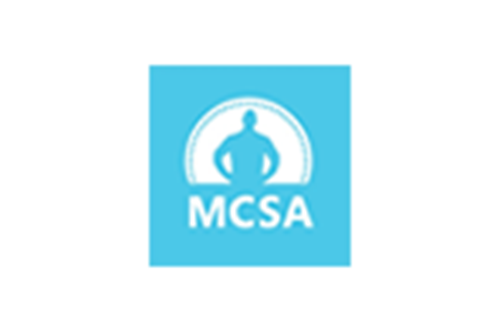In a best-case scenario, you buy underlying assets when the purchase price is higher than the strike price on a call option. And you sell them when the purchase price dips below the strike price on a put option. Successfully trading options means knowing which way you expect a stock or underlying security to move, how high or low you anticipate the price going and how long you want to keep the contract in place. Strike price in the options is a predetermined price at which the security or any underlying asset can be bought or sold on or before the expiry of the contract.
Therefore, options with longer times until expiration and those with greater volatility will have higher premiums. If a stock is trading below its strike price, you could choose to sell it to make a profit. So say you buy a put option for the same stock with a strike price of $15.
In the example above, the intrinsic value is $5, calculated as the $55 underlying stock price minus the $50 strike price. In this case, since the market price of the stock is lower than the strike prices for both Carla and Rick’s calls, the stock would not be called. We’ve already seen how the difference between the market price and the strike price fits into the equation. The time to expiration and volatility inputs indicate how likely it is for an option to finish in-the-money before it expires. The more time there is to go, and/or the more volatile the underlying price moves are, the more likely that the market price will reach the strike price. Volatile moves happen due to acquisitions, earnings reports, company news, and other factors.
How to select the right strike price?
They buy the shares for $680 and sell for $750 for a $70 per share gain. Subtract the $53 option price and the trader has a $17 per share return. For call options, the strike price is where the security can be bought by the option holder, whereas for put options, the strike price is the price at which the security can be sold. The price of Carla's and Rick's puts over a range of different prices for GE shares by option expiry in March is shown in Table 4.
- Where the contract requires delivery of the underlying instrument, the trade will be at the strike price, regardless of the market price of the underlying instrument at that time.
- They will be used by two investors with widely different risk tolerance, Conservative Carla and Risky Rick.
- On the other hand, a trader with a high tolerance for risk may prefer an OTM call.
- Conversely, the call option seller would be obligated to sell the underlying asset at the contract's predetermined strike price if the buyer chooses to exercise the option.
- And most importantly, remember that buying options doesn't mean you have to buy or sell the underlying assets if doing so isn't the right move for your portfolio.
But if it never reaches $110 before the expiration date, the call will expire worthless. If the stock did rise above $110, you could still exercise the option to pay $110 even though the market price is higher. (Put options would work similarly but give you the right to sell rather than buy the underlying). The strike prices in the share market are computed and declared by the exchange for every security or underlying listed for derivatives trading.
The Bankrate promise
Finally, an option with a strike price at or very near to the current market price is known as at-the-money (ATM). ATM options are often the most liquid and active options traded in a name. The strike prices listed are also standardized, meaning they are at fixed dollar amounts, such as $31, $32, $33, $100, $105, and so on.
For call options, the strike price is where the security can be bought by the option holder; for put options, the strike price is the price at which the security can be sold. For example, a call option would specify the option's strike price and expiration date - say, December 2023 and $45 - or what traders might call December 45s. The strike price of an option is the price at which a put or call option can be exercised. Picking the strike price is one of two key decisions (the other being time to expiration) an investor or trader must make when selecting a specific option. The strike price has an enormous bearing on how your option trade will play out.
The option expires with either a definite value or worthless, and the strike price is the key to determining that value. The price of Carla’s and Rick’s calls, over a range of different prices for GE shares by option expiry in March, is shown in Table 2. However, his trade is only profitable if GE trades above $28.38 ($28 strike price + $0.38 call price) at the option’s expiration. The price of an options contract is known as its premium, which is the amount of money that the buyer of an option pays to the seller for the right, but not the obligation, to exercise the option. The price difference between the underlying’s market price and the strike price determines an option’s value in what is known as the moneyness of the option. Options contracts are derivatives that give the holders the right, but not the obligation, to buy or sell some underlying security at some point in the future at a pre-specified price.
Strike Price: Definitions and Uses for Options Trading
For example, using a December $40 put option, the option would be worth $7 per contract if the underlying stock finished expiration in December at $33, or $40 minus $33. If the stock finished above $40, however, the put option would expire worthless. The strike price is a vital component of making https://www.fx770.net/ a profitable options play. Similarly, an option will lose value as the difference between the strike and underlying price become larger and as the option falls out-of-the-money. Knowing when to exercise an option can be tricky, and it hinges on both the strike price of the option and the timing.
An ITM call may be less risky than an OTM call, but it also costs more. If you only want to stake a small amount of capital on your call trade idea, the OTM call may be the best, pardon the pun, option. Pricing models were developed in the 1970s and ’80s to help understand the fair value of an options contract, such as the Black-Scholes Model and the Binomial Tree Model. Theoretically, an options’ premium should be related to the probability that it finishes in-the-money.
Why the strike price is important
Options are listed with several strike prices both above and below the current market value. The $110-strike call option would give the holder the right to buy the stock at $110 on or before the date when the contract expires. This means that the option would lose value if the stock falls and gain in value as the underlying stock increases in price.
There is no point using the option to sell at $40 when they can sell at $45 in the stock market. So before you purchase one you'll know exactly what price you could buy or sell an underlying asset for. But options trading can be risky and potentially expose you to higher losses. Minimizing losses while maximizing profits with options is tied to the strike price and knowing when to buy or sell.
An option’s delta is how much its premium will change given a $1 move in the underlying. So, a call with a +0.40 delta will rise by 40 cents if the underlying rises by a dollar. Carla and Rick are now bearish on GE and would like to buy the March put options. Carla and Rick are bullish on GE and would like to buy the March call options.






























 WhatsApp
WhatsApp